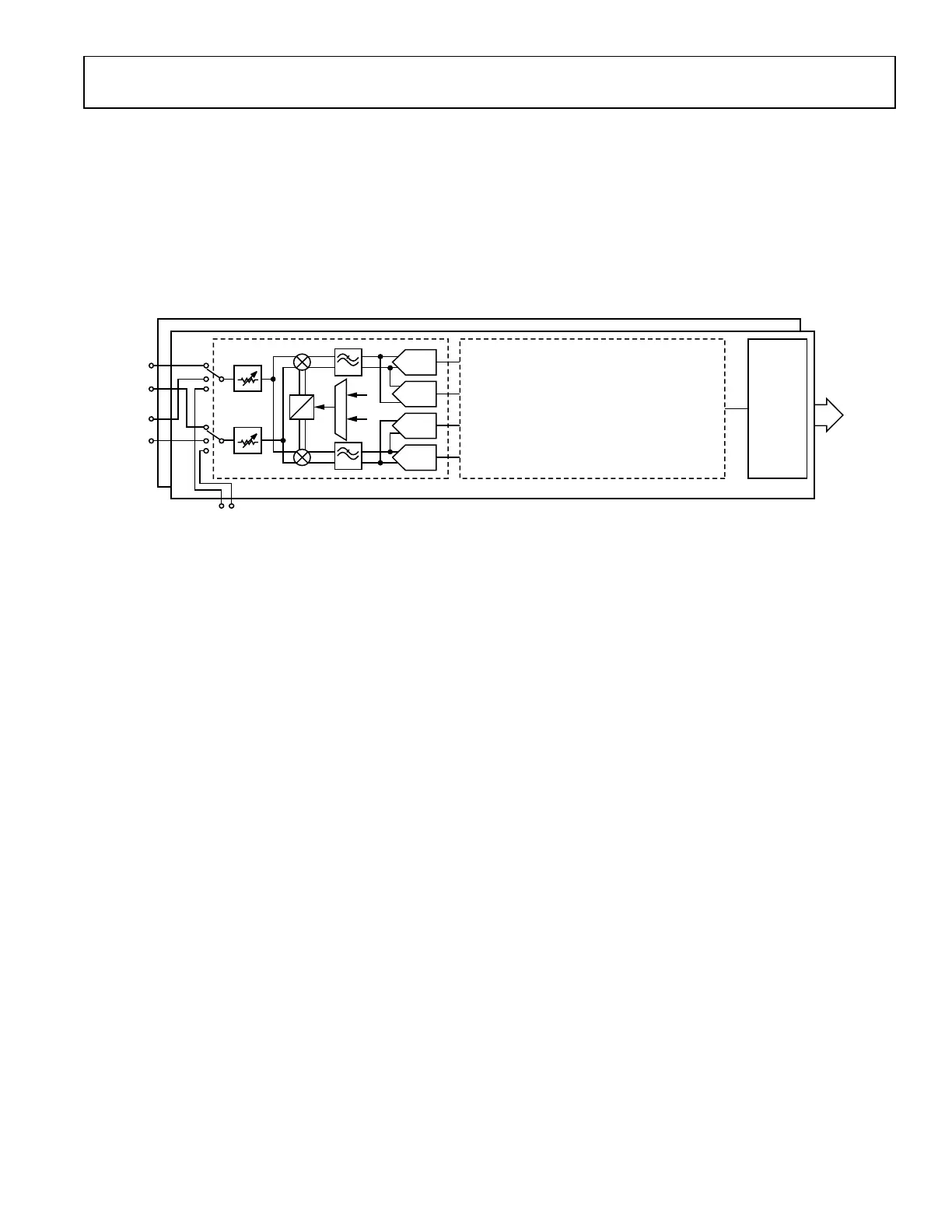Preliminary Technical Data UG-1828
Rev. PrB | Page 131 of 277
Initial Calibrations
Bits Enum
User
Override
Capability
Run at
Boot
Run After LO
Change <100
MHz and Run
when Not ÷2
Boundary
Change
Run after LO
Change
>100 MHz or
Run After ÷2
Boundary
Change
Signal Used
by Calibration
(Tones, Wide-
band, None)
External
Termination
Needed
Dependent on Which
Init Cals to be Run First
D20 RX_GAIN_PATH_
DELAY
No Yes TBD TBD Tone Yes RX_HPADC_RC,
RX_HPADC_FLASH,
RX_LPADC
D21 PLL Not
enabled
Not
enabled
TBD TBD Not enabled Not enabled Not enabled
D22 AUXPLL Not
enabled
Not
Enabled
TBD TBD Not enabled Not enabled Not enabled
For the optional initial calibrations, the TES provides the option to enable or disable those calibrations as shown in Figure 131. Note in
the current release, the configurable transmitter initial calibrations are LO Leakage (TX_LO_LEAKAGE), Loop Path Delay (TX_LB_PD), QEC
(TX_QEC) and Duty Cycle Correction (external LO only) (TX_DDC). When TX_LO_LEAKAGE or TX_QEC is enabled, TX_LB_PD
must be enabled too. When “Tx Direct FM/FSK” mode is selected in DMR or AnalogFM profiles, TX_LO_LEAKAGE, TX_QEC and
TX_LB_PD calibrations are not used. Those options become unconfigurable in TES. TX_DDC is only applicable when external LO is
used for transmitter. The configurable receiver initial calibrations are QEC frequency independent (RX_QEC_FIC), RFDC (RX_RF_
DC_OFFSET) and Duty Cycle Correction (external LO only) (RX_DDC). Similarly, RX_DDC is only applicable when external LO is
used for Rx.
The initial calibrations are performed when user clicks Program button in TES. It takes some time to complete all the calibrations (The
calibration time is still under optimization.). When it is successful, the TES will show a status as “Programmed”. If not, it will show
“Programming Failed”. When “Programming Failed” happens, the user could try the “Program” again. If it continues to fail after
multiple attempts, as the next step, the user could enable/disable the optional initial calibrations to see if the problem could be related to
some calibrations. Similarly, when performance issues are observed during the test, the user could play with the optional initial
calibrations as a preliminary debug method. In the future TES releases, more configurable calibration options will be provided.
Figure 131. Initial Tx/Rx Calibration Configuration through TES
TRACKING CALIBRATIONS
There are 14 different types of tracking calibrations, which can be classified into transmitter tracking calibrations and
receiver/observation receiver tracking calibrations:
Transmitter Tracking Calibrations
• Quadrature Error Correction tracking calibration (QEC)
• Local Oscillator Leakage tracking calibration (LOL)
• Loopback path delay tracking calibration (LB PD) (currently not available)
• Power Amplifier Correction tracking calibration (PAC) (currently not available)
• Digital Pre-distortion tracking calibration (DPD)
• Close Loop Gain Control (CLGC) (currently not available)
Receiver/Observation Receiver Tracking Calibrations
• Harmonic Distortion (2nd order) tracking calibration (HD2)
• Receiver Quadrature Error Correction Wideband Poly tracking calibration (Rx QEC WBPLOY)
• Observation Receiver Quadrature Error Correction Wideband Poly tracking calibration (ORx QEC WBPLOY) (currently not
available)
• Baseband DC offset tracking calibration (BBDC)
• RF DC tracking calibration (RFDC)
• Quadrature Error Correction Narrowband FIC tracking calibration (QEC FIC)
• Automatic Gain Control tracking calibration (AGC)

